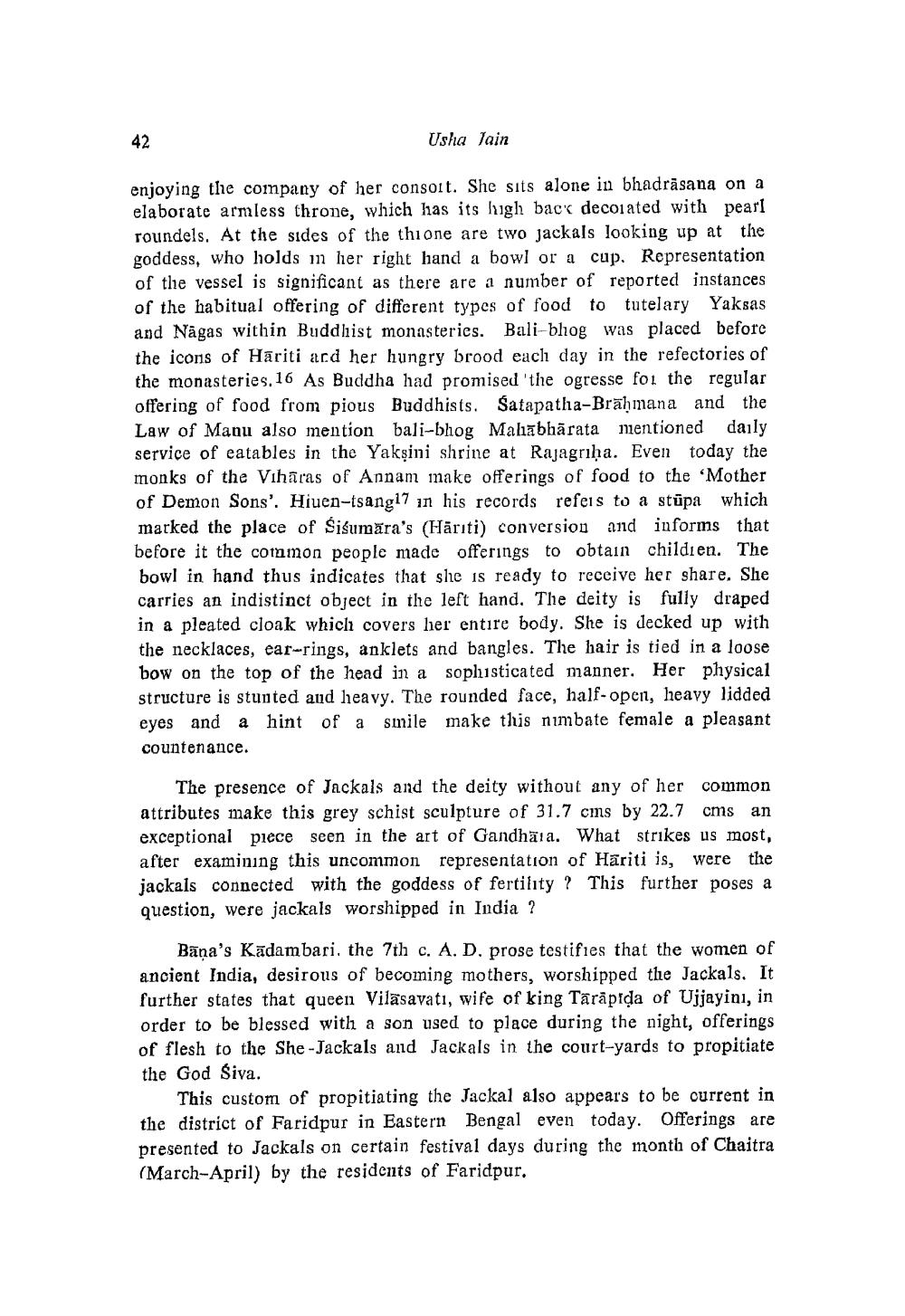________________
Usha lain
enjoying the company of her consoit. She sits alone in bhadrāsana on a elaborate armless throne, which has its high back decoiated with pearl roundels. At the sides of the thione are two jackals looking up at the goddess, who holds in her right hand a bowl or a cup. Representation of the vessel is significant as there are a number of reported instances of the habitual offering of different types of food to tutelary Yaksas and Nāgas within Buddhist monasteries. Bali-bhog was placed before the icons of Hariti acd her hungry brood each day in the refectories of the monasteries. 16 As Buddha had promised 'the ogresse for the regular offering of food from pious Buddhists. Satapatha-Brāhmana and the Law of Manu also mention bali-bhog Malabhārata mentioned daily service of eatables in the Yakșini shrine at Rajagriņa. Even today the monks of the Vihāras of Annam make offerings of food to the Mother of Demon Sons'. Hiuen-tsangi7 in his records refers to a stūpa which marked the place of Siśumāra's (Hāriti) conversion and informs that before it the common people made offerings to obtain childien. The bowl in hand thus indicates that she is ready to receive her share. She carries an indistinct object in the left hand. The deity is fully draped in a pleated cloak which covers hier entire body. She is decked up with the necklaces, ear-rings, anklets and bangles. The hair is tied in a loose bow on the top of the head in a sophisticated manner. Her physical structure is stunted and heavy. The rounded face, half-open, heavy lidded eyes and a hint of a smile make this nimbate female a pleasant countenance.
The presence of Jackals and the deity without any of her common attributes make this grey schist sculpture of 31.7 cms by 22.7 cms an exceptional piece seen in the art of Gandhäia. What strikes us most, after examining this uncommon representation of Hariti is, were the jackals connected with the goddess of fertility ? This further poses a question, were jackals worshipped in India ?
Bāna's Kādambari. the 7th c. A.D. prose testifies that the women of ancient India, desirous of becoming mothers, worshipped the Jackals. It further states that queen Vilasavati, wife of king Târāpida of Ujjayini, in order to be blessed with a son used to place during the night, offerings of flesh to the She-Jackals and Jackals in the court-yards to propitiate the God Siva.
This custom of propitiating the Jackal also appears to be current in the district of Faridpur in Eastern Bengal even today. Offerings are presented to Jackals on certain festival days during the month of Chaitra (March-April) by the residents of Faridpur,




